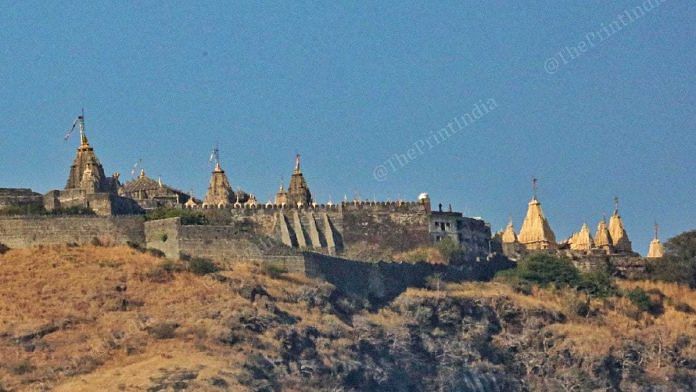Palitana, Gujarat: A controversial decision to convert Sammed Shikharji — a Jain revered pilgrimage site — into a ‘tourist centre’, by the Jharkhand government has led to protests across India. And the tremors are increasing in intensity thousands of kilometers away in Gujarat where the close-knit Jain community is up against what they allege is the “commercialisation of their religion” and the holy Shatrunjaya Hill.
The Hemant Soren government has put its decision on hold but the controversy has fanned the embers of discontent across the country. From Delhi to Karnataka and Rajasthan to Maharashtra, thousands of Jains have been holding peaceful protests over the twin issues related to Sammed Shikarji and Shatrunjaya Hill.
“We don’t want our religion to get into commercialisation. These are spiritual places, let it be like that. We are a peaceful religion. Such decisions are not acceptable,” Manish Kanadiya, a trustee of Anandji Kalyanji Pedhi, one of the oldest and largest organisations representing Jains, told ThePrint.
While Shammed Shikarji on Parasnath hill holds significance for Jains as 20 out of 24 Tirthankaras attained salvation (moksha) there, Shatrunjaya Hill is home to hundreds of temples. Rishabhdev, the first Tirthankar, is said to have visited Shatrunjaya as many as 99 times.
What triggered unrest in Gujarat was the vandalism of a Jain shrine near Shatrunjaya Hill in November. The situation is further muddied by a swami who is demanding that a local Hindu temple be brought under the control of the state government.
The Jain community in Gujarat has been fighting the illegal commercialisation and mining of the revered Shatrunjaya Hill for years. It is unlikely that the ruling dispensation will ignore the demands of the community whose influence far outweighs its minority status in the country.
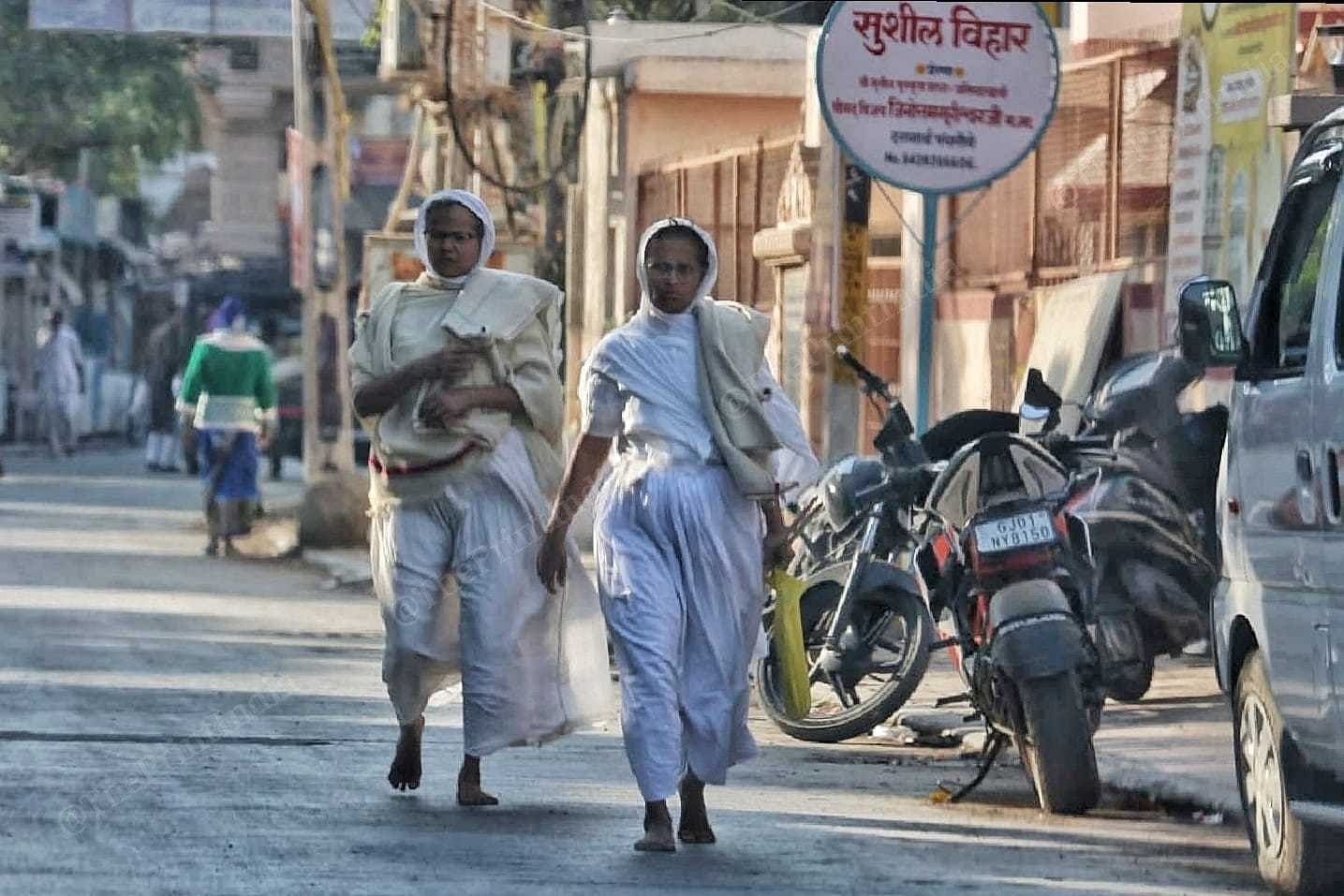
According to the 2011 Census, India is home to 45 lakh people (0.4 per cent of total population) who practice Jainism. The Census pegged the Jain population in Gujarat at 5.79 lakh but experts put the current figure close to 7 lakh.
“The Jain community is in trading and industry. They provide employment, are big advertisers and own large media houses. They have a say in public discourse, and are the highest fund-giver to political parties,” Ahmedabad-based political analyst Dilip Gohil told ThePrint. “They are very important in politics, not only in Gujarat, but at the national level as well.”
Also Read: ‘Love-jihad’ has a new territory. With Jharkhand murder, it has entered the tribal belt
Tension was building up
On a balmy January afternoon in Rohishala village in Gujarat’s Bhavnagar district, a lone policeman stood guard in front of a temple. The shrine is located just behind Shatrunjaya Hill, one of the holiest Jain pilgrimage sites with 865 temples.

It was here where the sacred charan paduka (footprints) of Lord Adinath, the first Jain Tirthankar, were desecrated allegedly by vandals in November last year. That act was the final straw for local residents who for several years have been demanding that the state government take action against illegal mining, rampant encroachments, land grabbing and sale of local liquor.
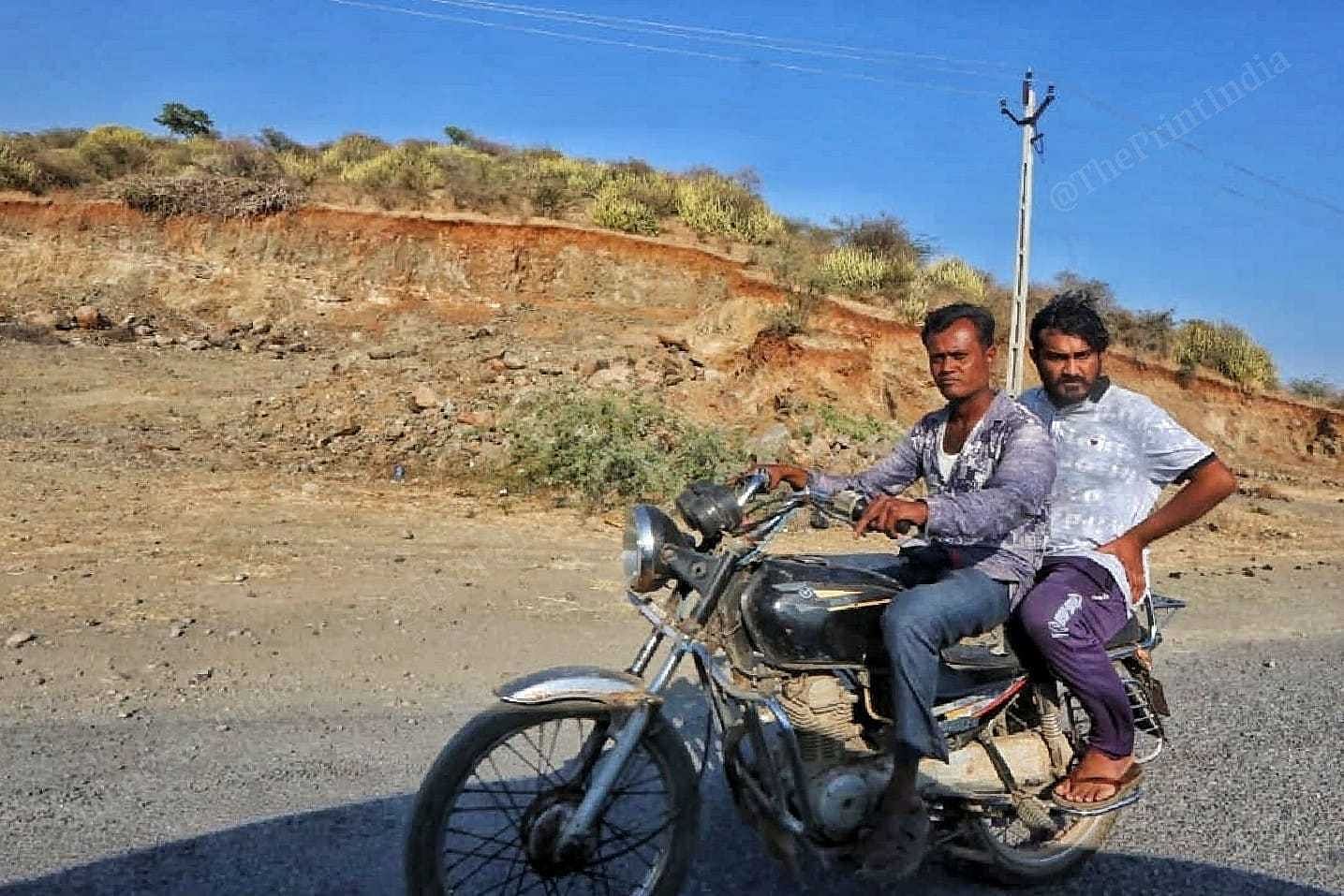
On 18 December, a large group of community members gathered in Palitana and submitted a 18-point petition to the collector of Bhavnagar district. A Jain delegation also urged the authorities to take action for checking the illegal activities.
“Every single stone/particle on Shree Shatrunjay Giriraj is considered holy and is revered by Jain devotees… And this belief of the Jain Community has been accepted in the past by the Mughal Emperors, the British Government, and by the current Government as well,” the petition read.
Subsequently, one person was arrested for the desecration of the charan paduka, and lights were installed around the premises to deter vandals. “After that incident, one policeman was posted here,” the security guard said.
But it was the Jharkhand government’s announcement that stoked the flames of insecurity within the community in Gujarat. On New Year, hundreds of Jains held a march as a mark of protest in Ahmedabad.
“Some anti-social elements sell alcohol around the holy place. They have encroached on the land of the hill. And not only that, illegal mining is going on. We can’t see our holy place get destroyed like this,” Anandji Kalyanji Pedhi’s Manish Kanadiya said.
“There are some 2-4 per cent people who form anti-social elements (in the society). Everything will be fine if the government controls them,” Hitesh Ajmera, a member of Palitana Jain Sangh, told ThePrint.
With protests spreading across India, the Gujarat government jumped to action, ordering the formation of a Special Investigation Team (SIT) to probe the desecration. The task force will have officials from police, municipal, revenue and forest departments as its members.
Gujarat Minister of State, Home, Harsh Sanghvi said a police post will come up at the base of Shatrunjaya Hill, adding that the government has been working for years to ensure that the faith surrounding it never diminishes.
“The task force is being formed for a speedy resolution of the matter. A police post will be set up in the area to boost security around the shrines. Along with this, strict arrangements will be made there by the government.” Sanghvi told the media Tuesday.
New claim, new trouble
Headquartered at Ahmedabad, the Anandji Kalyanji Pedhi takes care of the shrines in Shatrunjaya Hill. The trust also looks after the Neelkanth Mahadev Temple and a Muslim mazar (tomb) that are present in this hill.
“It is the rule of the pedhi (the local term for the trust) that all the pilgrimage sites present in the hill, whether it is a Jain temple, the tomb of a pir, or the Neelkanth temple, will be looked after by the trustees of Anandji Kalyan,” Manish Kanadiya of Anandji Kalayanji Trust, told ThePrint.
But Mahadev Neelkanth Sanrakshan Samiti, a fringe group, led by self-styled priest Swami Sharnanand is said to be using this unrest to demand that the Neelkanth Temple be brought under the control of the state government.
“The pagoda (Neelkanth Temple) is independent (not under the pedhi). Our only demand is that the government takes care of the shrine and does not give it to others,” Sharnanand told ThePrint, sitting in the two rooms he and his ilk share at an ashram, 10 km away from Palitana.
“The dharma sthal of Palitana has hindered many development processes,” claimed Sharnanand, who argued that ‘development’ would have taken place if the site was given recognition of a ‘Sanatan place’.
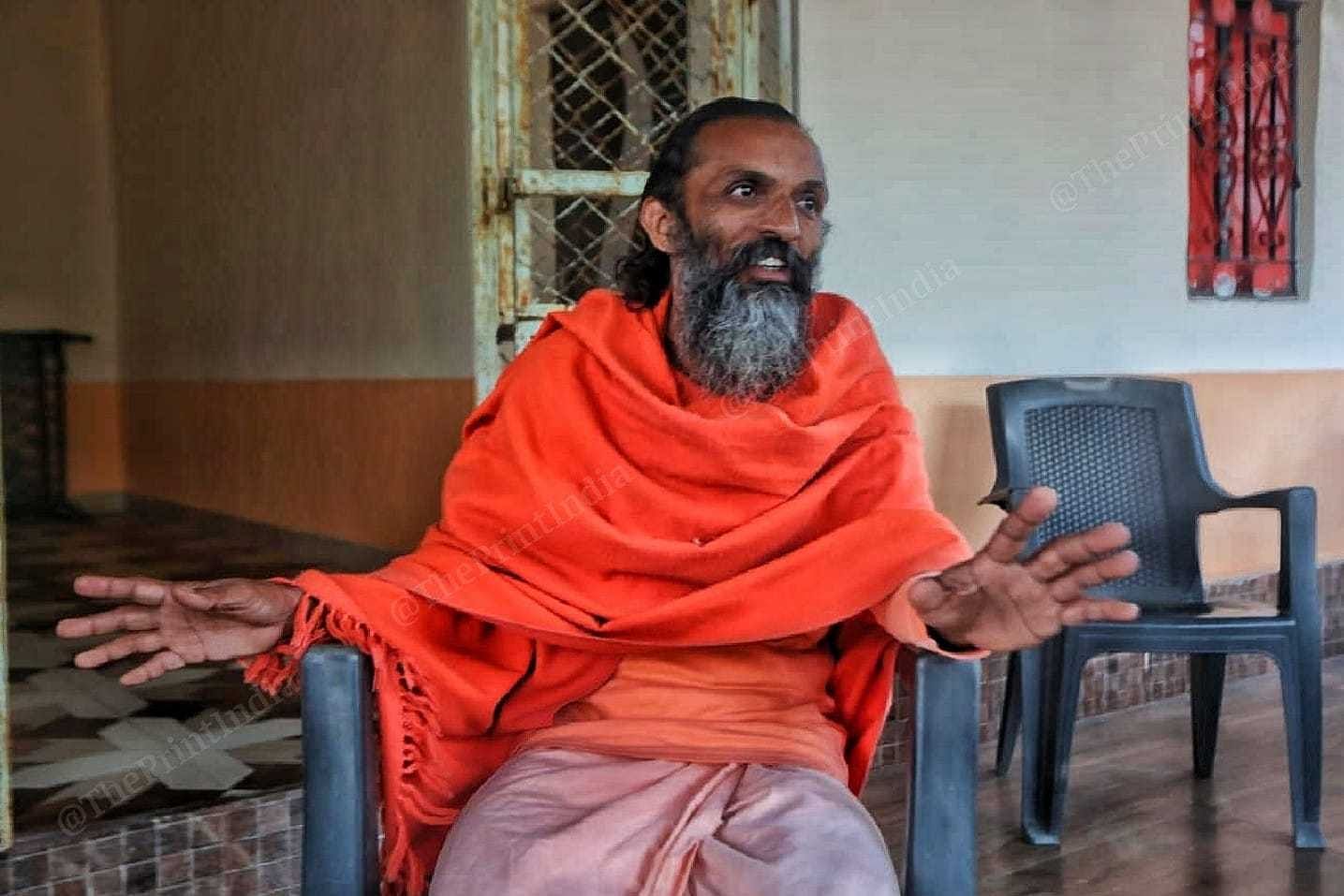
“I have no intention to destroy this Jain religious place but my statement was misrepresented,” he claimed.
Not everyone agrees with him. In the petition to the district commissioner, Jain leaders alleged that Sharnanand was spreading hate and dissent for which they sought action.
“Some of these anti-social elements want to achieve their interests by inflaming public sentiments via Sharnanand Bapu by spreading false, inflammatory, hateful information through speeches and social media, etc,” the petition read.
Also Read: Images of Hindu, Jain deities inside Qutub complex but it’s no place of worship, ASI tells court
Tourism: To be or not to be
Due to its proximity to Shatrunjaya Hill, the small town of Palitana in Bhavnagar district serves as a base for pilgrims arriving to visit Jain temples.
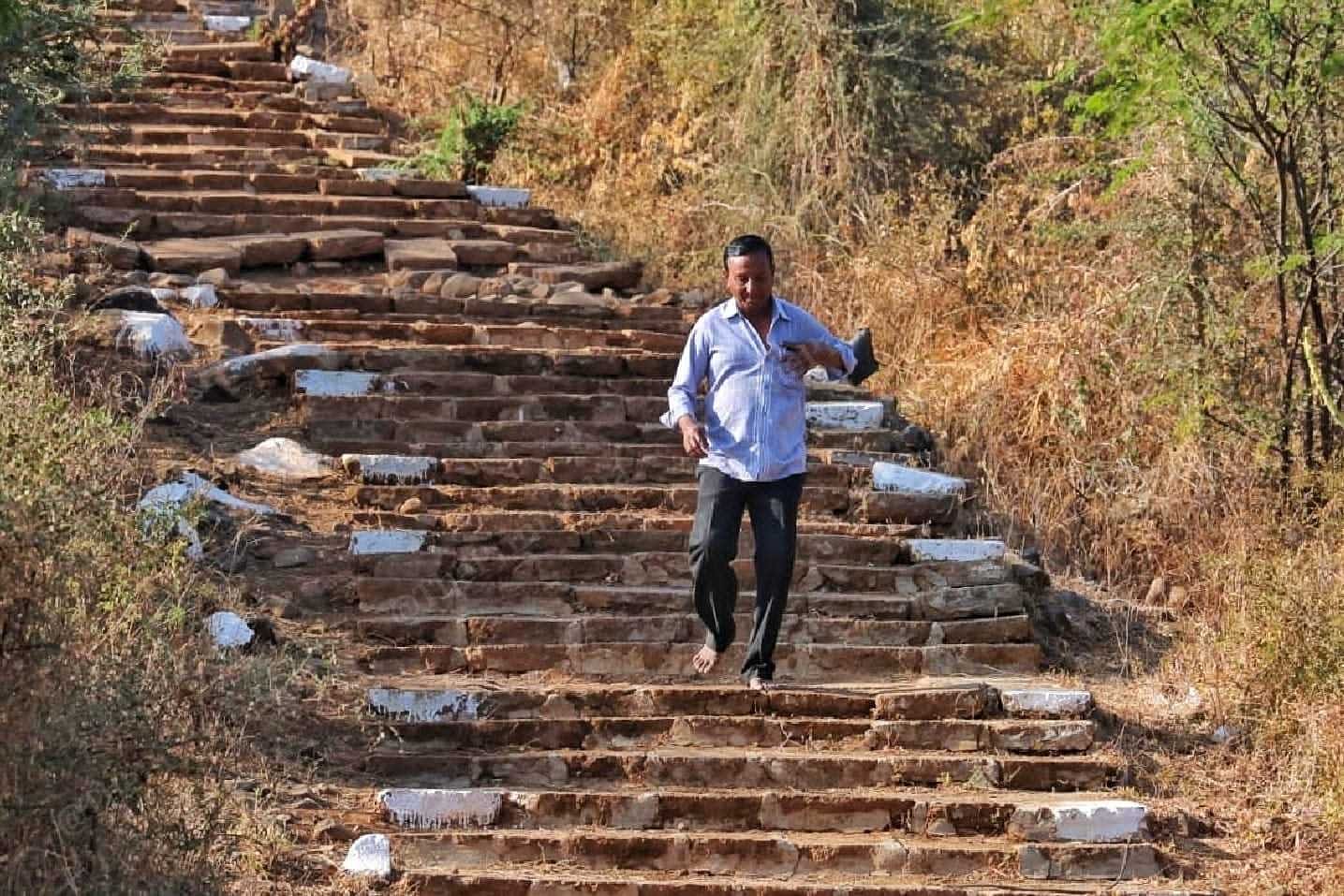
Visitors have to climb 3,500 steps along a hilly trail to reach the main temple which is known for its exquisite carvings on marble. Given its location, non-vegetarian food is not allowed in Palitana.
Much like the protests in Jharkhand, there are fears among the local people that rampant commercialisation or tourism will destroy the sanctity of the town as well as the sacred hill.
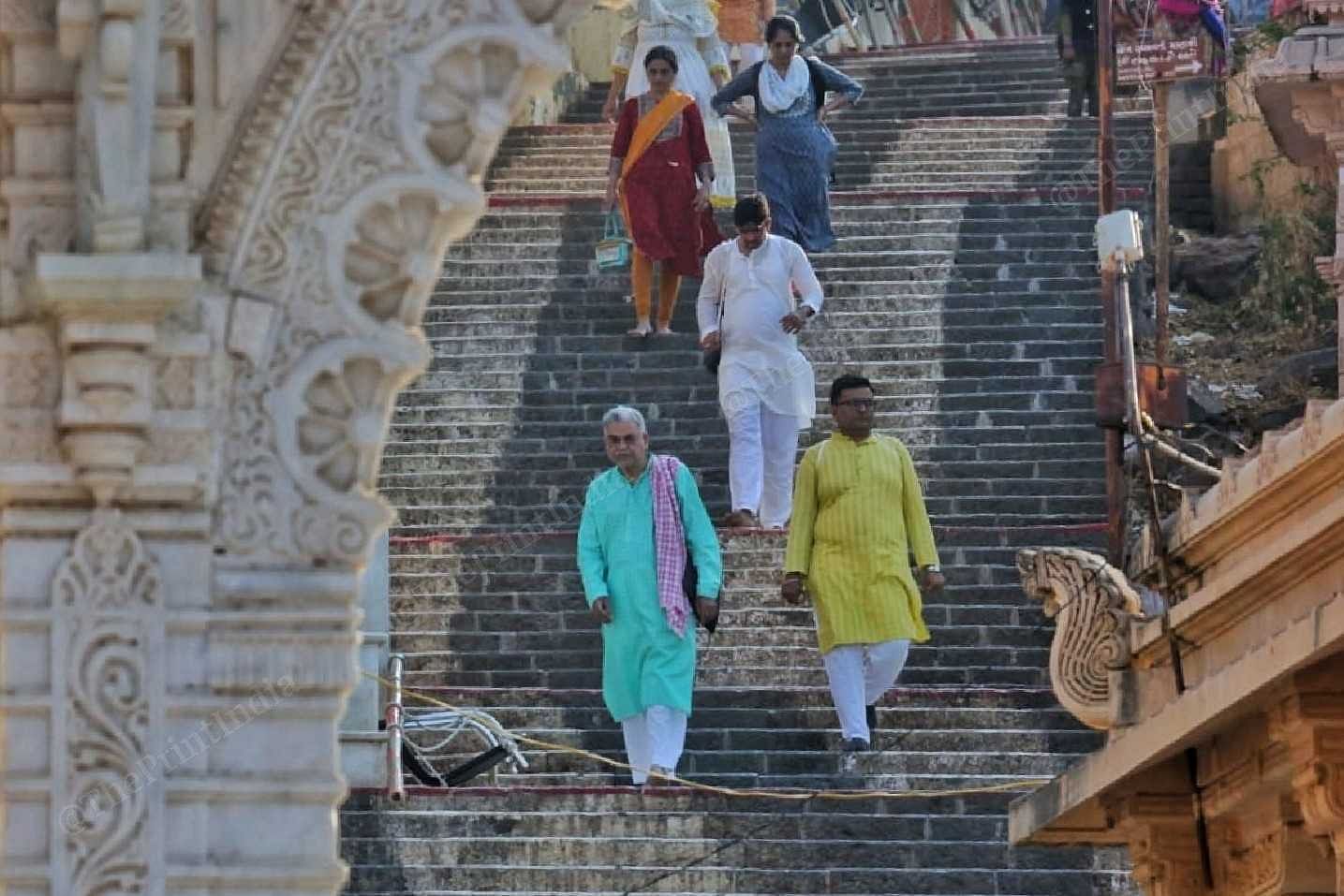
There is one opposing view that Palitana and Shatrunjaya can follow the Gomateshwara statue — a 18 metre high statue carved out of a single block of granite — in Shravanabelagola, Karnataka.
A popular tourist site in South India, the Gomateshwara statue is listed under the ‘things to do’ list in Hassan district, about 182 km from Bengaluru, in Karnataka’s tourism website.
But Prof. Hampa Nagarajaiah, a scholar in Kannada and Jainism, said that the Sammed Shikharji in Jharkhand cannot be compared with Shravanabelagola in Karnataka.
“Shravanabelagola is just a few kilometres wide. Activities can be controlled unlike in Sammed Shikharji which is vast with endless hills,” he told ThePrint in Bengaluru, pointing to the potential exploitation of the site if it gets the tag of ‘tourism site’.
When any site is declared for tourism, he said, there is a tendency of visitors to come with certain ‘expectation of activities’ as well as allowing the construction of resorts and other structures to accommodate them.
According to the tourism department of Karnataka, Shravanabelagola accounts for a significant chunk of visitors in Hassan district. Between 2020-21 and 2022-23, the site saw 2.56 lakh visitors. These numbers go up during the Maha Mastakabhisheka, the head anointing ceremony is performed once in 12 years. The last such event took place in 2018.
Back in Palitana and Ahmedabad, the Jains have put their protest on hold for now after Jharkhand put its decision on hold and requested the Centre to look into the matter. The community is now closely waiting and watching whether the Gujarat government delivers its promises as announced by the junior home minister on Tuesday.
Inputs by Sharan Poovanna in Bengaluru
(This is an updated version of the article)
(Edited by Tony Rai)
Also Read: Nearly 15% Jain men, over 4% Jain women eat non-veg, reveals NFHS-5 data


